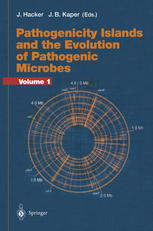

Most ebook files are in PDF format, so you can easily read them using various software such as Foxit Reader or directly on the Google Chrome browser.
Some ebook files are released by publishers in other formats such as .awz, .mobi, .epub, .fb2, etc. You may need to install specific software to read these formats on mobile/PC, such as Calibre.
Please read the tutorial at this link: https://ebookbell.com/faq
We offer FREE conversion to the popular formats you request; however, this may take some time. Therefore, right after payment, please email us, and we will try to provide the service as quickly as possible.
For some exceptional file formats or broken links (if any), please refrain from opening any disputes. Instead, email us first, and we will try to assist within a maximum of 6 hours.
EbookBell Team

4.1
50 reviewsIt has been known for a number of years that not only pathogenicity islands but also plasmids and bacteriophages are able to carry genes whose products are involved in pathogenic processes. Accordingly, such elements and their products play an important role in pathogenesis due to the intestinal E. coli as well due to Shigellae. Another interesting aspect which is reflected in different articles is that genomes evolve by acquisition of new pieces of DNA following gene transfer, but also by genome reduction. Different mechanisms include the deletion of sequences or the elimination of functions by the accumulation of point mutations or rearrangements.